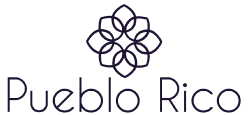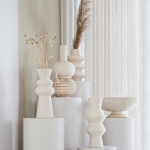Passive House – Efficient houses: an unstoppable trend

Passive houses are an increasingly popular trend due to their energy efficiency and sustainability. Today, we will explain some reasons why passive houses are gaining popularity. The “Passive House” or “Passivhaus” buildings manage to reduce heating and cooling needs by up to 90%. The little additional energy that it requires can be easily covered with renewable energies, becoming a construction with a very low energy cost for the owner and the environment. Our architecture director, Daniel Sanchez Mesa, is a certified Passivhaus designer and today he tells us how this current specializes in the fundamentals of energy efficient design. “Being a passive house designer is basically creating a strategy that maintains the balance of design while reducing the amount of energy required to achieve comfort.” He explains it this way, and also emphasizes that today Passive House is one of the main world standards in energy efficient construction.
Energy saving
Passive houses save energy primarily through their highly efficient building envelope and ventilation system. The building envelope of a passive house is designed to minimize heat loss and gain through the walls, roof, windows, and floors. This is achieved by using highly insulated materials, airtight construction, and advanced windows and doors with triple-pane glass and low-e coatings. The result is a building that requires very little heating or cooling, even in extreme. These homes also use a mechanical ventilation system with heat recovery to maintain indoor air quality and reduce the need for additional heating and cooling. This system uses a heat exchanger to extract the heat from the stale outgoing air and transfer it to the fresh incoming air, preheating or precooling it as needed. This means that the fresh air coming into the house is already partially heated or cooled, reducing the need for additional energy to maintain a comfortable indoor temperature.
Increased Resale Value
Passive houses are in high demand and their resale value can be higher than that of a traditional house due to their energy efficiency and sustainability. Many buyers today are interested in homes that are environmentally friendly and sustainable. Passive houses are designed to minimize their environmental impact and often use renewable energy sources such as solar power. This can make them more desirable to buyers who prioritize environmental considerations. In resume, these homes are a sustainable and responsible alternative compared to traditional houses, since they reduce energy consumption and minimize the carbon footprint.
How you can have an efficient home?
Well, basically to achieve this, we have to optimize existing resources such as:
Reduction of the surface in contact with the outside to minimize the need for air conditioning.
Plan a correct orientation of the windows to take advantage of the heat of the sun.
Improve natural ventilation and think about the best time of day to do it so that the loss of heat or coolness in the home is minimized.
Install solar protection to avoid overheating in summer, this can be achieved through the use of awnings, installation of pergolas or simply having vegetation that projects shade in the summer months. Other things you can do are:
Check and upgrade your insulation: Insulating your home properly can help keep it cooler in the summer and warmer in the winter, reducing the need for heating and cooling systems.
Install energy-efficient windows and doors: Energy-efficient windows and doors can help prevent heat loss and gain, reducing the need for heating and cooling systems.
Use energy-efficient lighting: LED light bulbs use less energy than traditional incandescent bulbs, and they last longer.
Choose energy-efficient appliances: Look for appliances with the A+ certificate (Appliances with an A rating are the most energy-efficient, while those with a G rating are the least efficient). In the U.S, look for the ENERGY STAR label, which means they meet energy-efficiency standards set by the U.S. Environmental Protection Agency.
Use a programmable thermostat: A programmable thermostat can help you reduce energy consumption by automatically adjusting the temperature when you are away from home.
Seal air leaks: Air leaks around doors, windows, and other areas can allow hot or cold air to enter your home, causing your heating and cooling systems to work harder than necessary.
Use renewable energy sources: Consider installing solar panels or a wind turbine to generate your own electricity.
Reduce water consumption: Install low-flow showerheads and faucets, and fix any leaks promptly. By following these tips, you can create a more efficient home that not only reduces your energy bills but also helps to protect the environment, and investing in an efficient design with a qualified professional can save us a lot in the consumption of resources and gain a high level of comfort.
Daniel Sánchez Mesa
Partner – Architect
(+34) 615 693 312
(+34) 952 130 841
Centro Comercial Guadalmina IV, Local 92, primera planta.
29670, Guadalmina Alta, Marbella.




